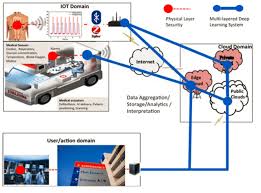Exploring the Xn Interface Between Base Stations in 5G Networks
telcomatraining.com – In the rapidly advancing world of telecommunications, the implementation of 5G networks is poised to revolutionize connectivity across the globe. One of the fundamental components of 5G architecture is the integration of base stations. These base stations serve as the vital link for user equipment (UE) to access network services. Within this intricate ecosystem, the Xn interface plays a crucial role in enabling efficient communication and interaction between different base stations.
What is the Xn Interface?
The Xn interface is a standardized communication channel designed for interconnecting base stations within a 5G network. Specifically, it facilitates the exchange of signaling and user data between the 5G NodeBs (gNBs) — the base stations in 5G networks. This interface is pivotal for the smooth operation of various network functions, including mobility management, load balancing, and traffic handling. It allows base stations to coordinate their actions in real-time, ensuring that users experience seamless connectivity even when moving between different network regions.
The Role of the Xn Interface in 5G Networks
In a traditional cellular network, base stations are isolated entities, each managing its own set of users. However, 5G networks are designed to be much more dynamic and flexible. The Xn interface provides the necessary framework for these base stations to communicate with each other efficiently. This interconnection enables several important features in 5G, including:
- Mobility Management: As users move across the network, their connection needs to be handed over from one base station to another. The Xn interface enables this handover process by allowing base stations to exchange information about the user’s location and connection status. This ensures that users experience minimal disruption during the transition, even at high speeds or in areas with low signal strength.
- Load Balancing: In 5G networks, dynamic load balancing is essential to ensure optimal resource utilization. The Xn interface enables base stations to share information about network traffic and load conditions. This allows the network to intelligently distribute traffic, prevent congestion, and optimize overall performance.
- Inter-base Station Coordination: The Xn interface allows base stations to synchronize their activities and coordinate network resources. This collaboration ensures that users get the best possible connection, regardless of which base station they are connected to. This is especially important in dense urban environments where multiple base stations are in close proximity to one another.
- Service Continuity: For mission-critical applications that require a high level of reliability, such as autonomous vehicles or remote surgeries, the Xn interface ensures that service continuity is maintained. By enabling real-time communication between base stations, users can maintain uninterrupted service as they move through different parts of the network.
Benefits of the Xn Interface in 5G Networks
The Xn interface brings a range of benefits to 5G networks, helping telecom operators meet the demands of modern users. These benefits include:
- Reduced Latency: With its ability to handle real-time communication between base stations, the Xn interface minimizes the delay in handovers and other processes, resulting in lower latency. This is crucial for applications that require near-instantaneous data transmission, such as augmented reality (AR) and virtual reality (VR).
- Enhanced Network Efficiency: By enabling base stations to share information about load conditions, the Xn interface allows for more efficient resource allocation. This reduces the likelihood of network congestion and improves the overall performance of the network.
- Scalability: As 5G networks expand, the need for efficient interconnection between base stations becomes more critical. The Xn interface supports network scalability, enabling operators to add new base stations seamlessly without sacrificing performance.
- Improved User Experience: The real-time coordination of base stations through the Xn interface ensures that users enjoy a reliable and high-quality experience, even in areas with high network density. This results in better coverage, faster speeds, and more stable connections.
Challenges in Implementing the Xn Interface
Despite its many benefits, the Xn interface also presents certain challenges. These include:
- Complexity of Integration: Integrating the Xn interface into existing 5G infrastructure can be complex, requiring extensive coordination between different base stations and network elements. The deployment of the Xn interface must be carefully planned to ensure smooth interoperability.
- Security Considerations: The Xn interface involves the exchange of sensitive data between base stations, which raises potential security concerns. Telecom operators must implement robust security measures to protect against potential cyber threats.
- Resource Management: Efficiently managing the resources involved in the Xn interface requires careful planning to avoid congestion and ensure that the network operates smoothly.
Conclusion
The Xn interface is a critical component of 5G network architecture, enabling seamless communication and coordination between base stations. Through its support for mobility management, load balancing, and service continuity, the Xn interface enhances the overall performance and user experience of 5G networks. While challenges exist, the benefits of implementing the Xn interface far outweigh the potential drawbacks. As 5G networks continue to evolve, the Xn interface will play an increasingly important role in supporting the high-speed, low-latency connectivity that will power future innovations in technology.







